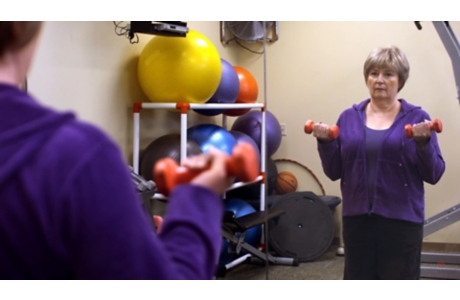Prediabetes: Exercise Tips
Topic Overview
If you have been diagnosed with prediabetes, you have an opportunity to prevent the progression of this condition to type 2 diabetes. By getting regular exercise, changing your diet, and losing weight, you can play a key role in preventing diabetes. Any type of physical activity may be beneficial, such as:
- Sports or other types of exercise, such as walking, jogging, swimming, or biking.
- Household work, such as vacuuming or gardening.
- Work-related activities.
Experts say to do either of these things for exercise:footnote 1
- Moderate activity for at least 2½ hours a week. One way to do this is to be active 30 minutes a day, at least 5 days a week. Moderate activity means things like brisk walking, brisk cycling, or ballroom dancing. But any activities—including daily chores—that raise your heart rate can be included. You notice your heart beating faster with this kind of activity.
- Vigorous activity for at least 1¼ hours a week. One way to do this is to be active 25 minutes a day, at least 3 days a week. Vigorous activity means things like jogging, cycling fast, or cross-country skiing. You breathe rapidly and your heart beats much faster with this kind of activity.
It’s fine to be active in blocks of 10 minutes or more throughout your day and week.
If your doctor says it’s okay, then try to do muscle-strengthening exercises at least 2 times a week. These exercises include push-ups and weight training. You can also use rubber tubing or stretch bands. You stretch or pull the tubing or band to build muscle strength. Be sure to work the major muscle groups: legs, hips, back, abdomen, chest, shoulders, and arms.
Before starting an exercise program
- Talk to your doctor about how and when to exercise. You may need to have a medical exam and special tests (such as a treadmill test) before you begin.
- Choose a type of exercise that you like and that fits easily into your daily schedule. If you choose something you like, you will be more likely to continue the program.
During exercise
- Drink plenty of water before, during, and after you are active. This is very important when it’s hot out and when you do intense exercise. Consider a sports drink if you or your child has been exercising intensely or for more than 1 hour. This kind of drink can help replace electrolytes that are lost through sweating.
- Don’t exercise if you are sick or injured or if the weather is very hot or very cold.
- Choose the best time and place to exercise. A poorly lit street with uneven pavement would not be a good choice.
- Wear shoes that fit well and polyester or blend (cotton-polyester) socks to keep your feet comfortable and prevent injury. Use silica gel or air midsoles in your shoes to keep your feet dry and comfortable.
For more information, see the topic Fitness.
Current as of: April 16, 2019
Author: Healthwise Staff
Medical Review:E. Gregory Thompson, MD – Internal Medicine & Kathleen Romito, MD – Family Medicine & Adam Husney, MD – Family Medicine & David C. W. Lau, MD, PhD, FRCPC – Endocrinology & Martin J. Gabica, MD – Family Medicine
This information does not replace the advice of a doctor. Healthwise, Incorporated, disclaims any warranty or liability for your use of this information. Your use of this information means that you agree to the Terms of Use. Learn how we develop our content.




